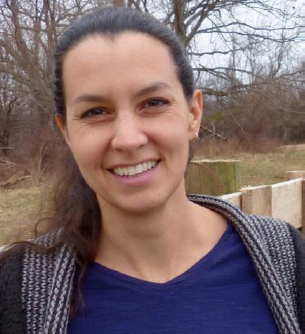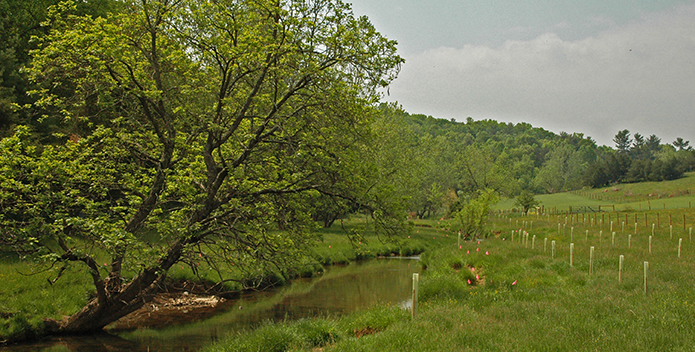(Greenville, VA)—Widowed with five children, Marli Hickin wondered what do with the family farm. While she could continue to let the neighboring dairy use it, she decided instead to farm the land herself with help from her children. It has since become a teaching tool for the kids and conservation model.

Marli Hickin uses her farm to teach her children about sustainability.
Marli Hickin
Her farm is located at the uppermost reaches of an unnamed tributary of Broadhead Creek, which flows into the South River, part of the Shenandoah River watershed. Springs just bubble up out of the ground in many places. But the neighbor's cows had access to all of them, creating multiple pits of muck and manure.
"I felt that since our farm was at the beginning of the creek, it was our responsibility to make sure it was a good beginning," Marli explained. "I homeschool the kids and I thought, ‘What better way to teach sustainability, water quality, and ecology than beginning with the water on our own farm?'"
She decided to enroll in the USDA's Conservation Reserve Enhancement Program (CREP). This allowed her to drill a well to provide water for livestock, install fences to keep livestock out of the springs and streams and to create more fields to graze, and plant native trees and shrubs to improve water quality and create wildlifehabitat.
Conservation planners, private contractors, along with federal and state funding, helped create a rotational grazing system for the farm that now has six livestock watering stations and seven grazing units.
Marli's son Bo explained that the property is now an outdoors classroom. "The farm makes it easy to learn about biology, genetics, physics, ecology, anatomy and math," he said.
"The kids have learned more on our land than I ever learned in my genetics and anatomy classes in college," Marli said. "It's a remarkable experience."
The Hickins raise livestock and plan to have bees as well. They selected native trees that would attract pollinators such as paw-paw, American plum, and serviceberry. They also planted wildflowers in the CREP area.
Marli's 14-year-old daughter Lily is eager to see the native plants and trees grow.
"I can't wait to climb all the fruit trees," she said.




